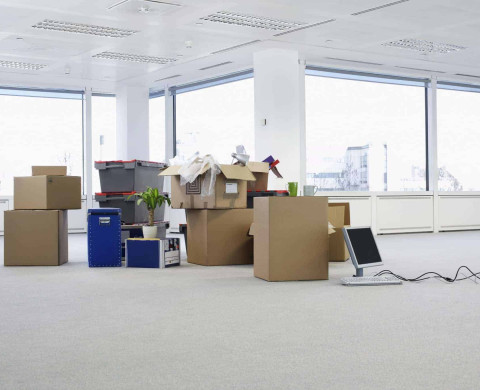The best moves start long before a box is packed
There’s more to a relocation than a sparkling new office. Even if it’s built, designed, decorated and fitted perfectly, the project can still turn sour. Why? Because communication is crucial to any business initiative – and what initiative could be bigger than an office move?
1. Listen to your people
Relocation to a new office might cause excitement – it’s usually a step forward after all. However, it has an enormous impact on employees who might not always share the same attitude. There have even been cases where protests were so strong, trade unions got involved.
So, it’s vital to know the potential pitfalls. Learn about employees’ worries: listen to what they love and hate about their current office. This will help you to tailor your communication and relocation strategy.
Their opinions will effectively underpin the content of your communications too. Of course, our team here at Origameo can also look holistically at the situation too, so you can fuse your people’s needs into the design your future office.
2. Don’t wait until the home stretch
Successful communication is a two-way process. So start talking about the move and give your people time to get involved.
Employees are the core focus of any relocation. So if they find out about the move from another source, expect chaos, unexpected troubles and sceptical attitudes. Give them information as soon as you can, and you’ll be able to anticipate and react to any risky situations.
3. Don’t think you know all the answers
The best office moves are a collaborative process. Include each department’s leaders and influencers from the start – the diagnostic phase – and they should help everything flow smoothly.
These well-respected employees will give you an insight on how others within your business feel about the move. Make sure they know it’s ‘their’ move too, so they become agents of change.
It’s important to not only focus on people positive about the process. The best change agents are often sceptical at the early stage. As they realise they can influence decisions, they become strong ambassadors who share updates with other employees and collect crucial feedback.
4. Get people excited
Relocation communications don’t have to be boring. Build the excitement. Get your marketing or PR team to work with change agents and create a brand for the relocation process. It could be something based around a graphic, a product from your portfolio, or a reference to the new address.
Then, make sure every communication uses that branding: every newsletter, poster, educational film and print ready space plans. That consistency will build momentum. And remember to bring out more and more messages as the move day gets closer.
5. Don’t keep secrets
There’s no point withholding information. Employees will find out anyway. Always share the facts, ask for ideas, get different opinions, keep everyone updated, and make sure they’re part of the project.
There are many ways to communicate. Face-to-face meetings are obviously the best for immediate feedback. But team and department briefings can start great conversations too. Broadcast channels – like emails – or surveys on the internet or through third parties can give you great data. And don’t forget to use the trusty office notice board. What should you talk about? Here are some suggestions.
- Ask for ideas on the plan and design of the new office
- Get people’s thoughts on details like décor, what to put in the kitchen, and what a games room or break out area should be like.
- Start a competition to name meeting rooms.
- Bring in samples of furniture for people to test.
- See what people think about big cultural changes, like archiving, a clean desk policy, lockers and hot desks.
6. Celebrate the move
Moving office, just like moving house, can be very stressful for everyone involved. But a moving in party will quickly make everyone feel at home.
Even something as simple as bought-in breakfasts on day two in the new space will make everyone feel positive. A larger affair, though, will create instant memories, and help people feel this is a new chapter for the business.
7. It’s not over
Just because you’re sat at your new desk in your new office, the relocation process is over. People might struggle with new equipment, desk locations, lifts – there are lots of factors to consider.
Monitor the situation and give everyone time to adjust to the new reality. Then, after four to six months, run a survey – branded, of course – that discovers what employees think of their new space.
If there are problems, try to fix them. Offices are supposed to be flexible and should evolve with your needs. In fact, we recommend asking people’s opinions on at least an annual basis.
Author: Adam Jaszkowski
Workplace Consultant at Origameo

